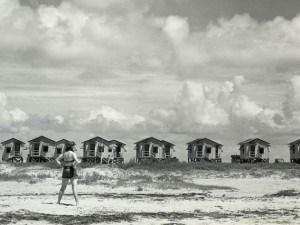Photography Review: Edward Weston at the MFA
 Over the weekend I paid a visit to the MFA in Boston — my first in over a year. In the hours I spent wandering through the museum’s impressive collections and newest exhibitions, nothing held my attention quite so raptly as one tiny room of black-and-white photographs by Edward Weston. Simple and luminous, many of his pictures capture the effects of American civilization on landscapes as varied as the green hills of Ohio and the white sands of New Mexico.
Over the weekend I paid a visit to the MFA in Boston — my first in over a year. In the hours I spent wandering through the museum’s impressive collections and newest exhibitions, nothing held my attention quite so raptly as one tiny room of black-and-white photographs by Edward Weston. Simple and luminous, many of his pictures capture the effects of American civilization on landscapes as varied as the green hills of Ohio and the white sands of New Mexico.
The collection — on loan from the Lane Collection — is titled “Leaves of Grass” after Walt Whitman’s masterwork, perhaps the greatest of American poems. In 1941, Weston was hired by the Limited Editions Club of New York to illustrate its two-volume limited edition of Leaves of Grass (of which a copy is available for display in the gallery). The photographer subsequently took off on a road trip that brought him and his wife from New England to the Southeast and back across the country to their native California.
Circling the collection, I could not look away from the image of a narrow road snaking its way through the moonlit fields of Connecticut farmlands — just as my attention was held by the picture of a Louisiana plantation house far into decline. Weston’s photographs in some way capture the thrill of being a traveler, of stumbling upon something that is at once new and ancient. It is the thrill of both discovery and recognition.
While Whitman’s poetry is often extravagant in its descriptions and range (and at times even a little rough around the edges), Weston’s photographs are controlled, subdued, and exacting. However, the subject of the collection is really no different from that of Whitman’s opus. Both these pictures and the poem are a meditation on America, in all its variety and contradictions. At the start of the exhibition, you can glimpse a quote from Weston that just about says it all: “I do believe . . . I can and will do the best work of my life. Of course I will never please everyone with my America — wouldn’t try to.”
Weston’s “Leaves of Grass” will be on view at the MFA on December 31, 2012.
Will Holt also blogs at Letters from a Bay Stater, where this entry was first posted.
New Cambridge Observer is a publication of the Harris Communications Group–an award-winning PR and marketing firm based in Cambridge, MA.
 Through the Looking Glass is a 40-year retrospective of the Washington State artist’s blown glass sculptures–such as a boat containing thousands of glass flowers, fantastical forests, sculptures based on South American basketry–which took us out of our doldrums and got our imaginations flowing and reminded us that we can each create worlds of our own.
Through the Looking Glass is a 40-year retrospective of the Washington State artist’s blown glass sculptures–such as a boat containing thousands of glass flowers, fantastical forests, sculptures based on South American basketry–which took us out of our doldrums and got our imaginations flowing and reminded us that we can each create worlds of our own.
 In
In